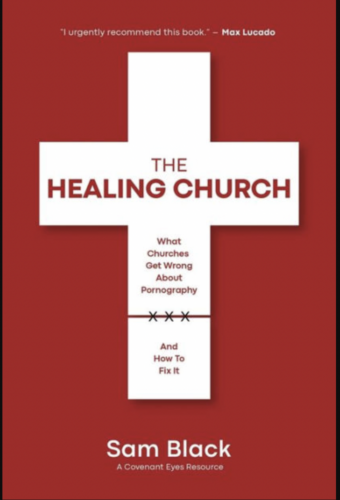By Mark Ellis –

A startlingly high percentage of men and a surprising number of women who identify as Christians and regularly attend church are battling porn addiction.
“Two-thirds of men in the church say they have an ongoing struggle with pornography,” according to Sam Black, author of The Healing Church: What churches get wrong about pornography and how to fix it (Morgan James Faith). Black, director of recovery education at Covenant Eyes, interviewed 70 pastors, ministry leaders, counselors, and people who have recovered from addiction in researching his book.
“When we break that down a little bit further 37% of all Christian men say they’re watching pornography multiple times a week. Thirty-six percent of 18- to 30-year-olds say they’re watching it daily,” he notes.
Surprisingly, a third of Christian women say they are also struggling with porn addiction.
Black believes his book will provide practical help for those struggling. “I really wanted to help pastors and ministry leaders understand why people often get stuck, why they often stay stuck without help, and how the church can really provide a safe place and a safe process for people to really find lasting freedom.”
He wants people to not only find freedom from pornography, but also healing at a deeper level, by digging into the underlying roots of the behavior, so Christians can really begin living in the fullness Christ offers.
Black finds a commonality among those who struggle. “Men keep telling the same story, in three parts. One is early exposure as a child. Two, it’s the ongoing repetition and use of pornography, especially through adolescence. And number three is some trauma and drama that happened early in life, but it can come at other times as well.”
 “Men and women have grown up practicing and using pornography. So by the time that they get to adulthood, they have a 500-pound gorilla on their backs. So when we unroll those three common factors, it really helps us better understand why people become so stuck and why this becomes not just occasional use but compulsive use, or even regular use.”
“Men and women have grown up practicing and using pornography. So by the time that they get to adulthood, they have a 500-pound gorilla on their backs. So when we unroll those three common factors, it really helps us better understand why people become so stuck and why this becomes not just occasional use but compulsive use, or even regular use.”
Examples of trauma include sexual abuse, divorce, workaholic parents, bullying at school, feelings of abandonment, and the death of a parent.
“There is a wide variety of wounds that can happen. Wounds doesn’t mean someone will be addicted to pornography. Early exposure doesn’t mean someone will be addicted to pornography. But when you combine these things together, especially if there is easy access to pornography, then it’s often very easy for people to flip between simply curiosity to escapism, especially when they feel fear, anxiety, frustration, or anger,” he maintains.
When people want to anesthetize their emotions or regulate or moods, they run to pornography.
Technology – especially the smartphone – has compounded the problem. “We’ve literally been carrying around in our pockets the world’s largest library of pornography ever created in the history of mankind.
So children today don’t just see nudity and adult bodies, they see things that are very hardcore, often violent and demeaning. That can be very upsetting, startling, and shocking.”
Porn addiction also has a major impact on church life. “There’s a direct correlation between pornography use and prayer life, scripture reading, and church attendance. In fact, a University of Oklahoma study found a direct correlation between the frequency of pornography use and whether someone will serve on a committee or volunteer role in their church.”
But Black is hopeful about churches that employ the process of healing outlined in his book. “While I was doing the interviews for the book, I found that every church that was doing this work well were finding the reverse of those studies.
“Over and over again, pastors were saying, we see that when people go through this process, they go on fire, that their church attendance grows, their scripture reading, their prayer life is plentiful, their feelings of closeness to God have grown enormously, and we have more volunteers.”
To learn more about the book, go here



